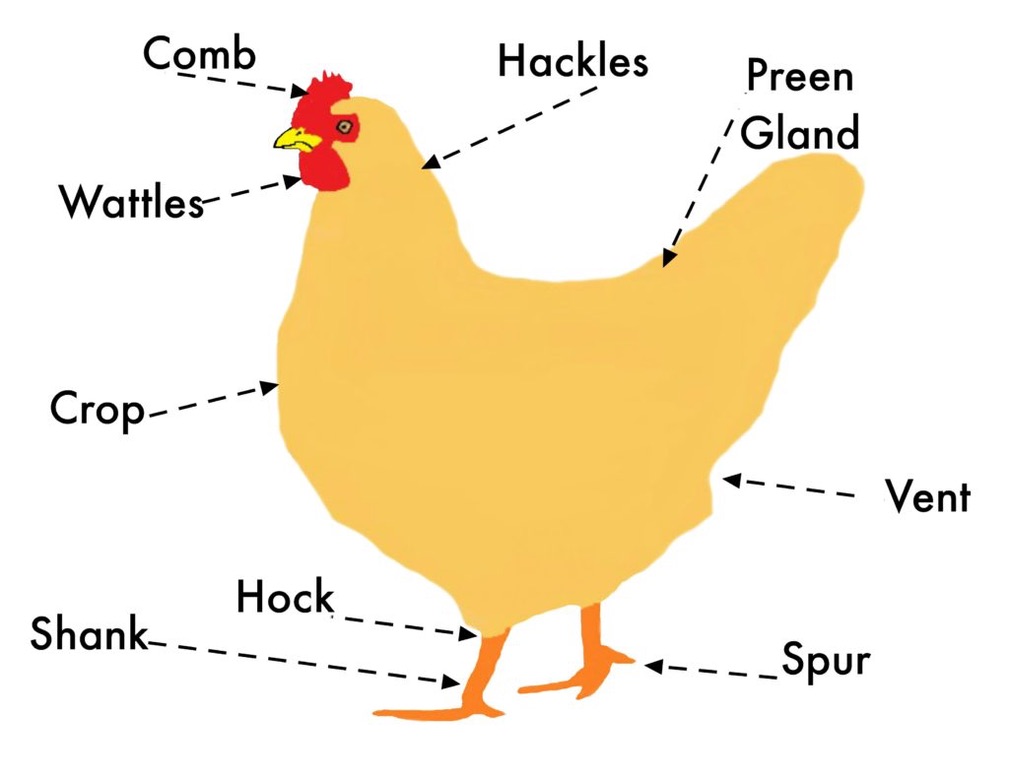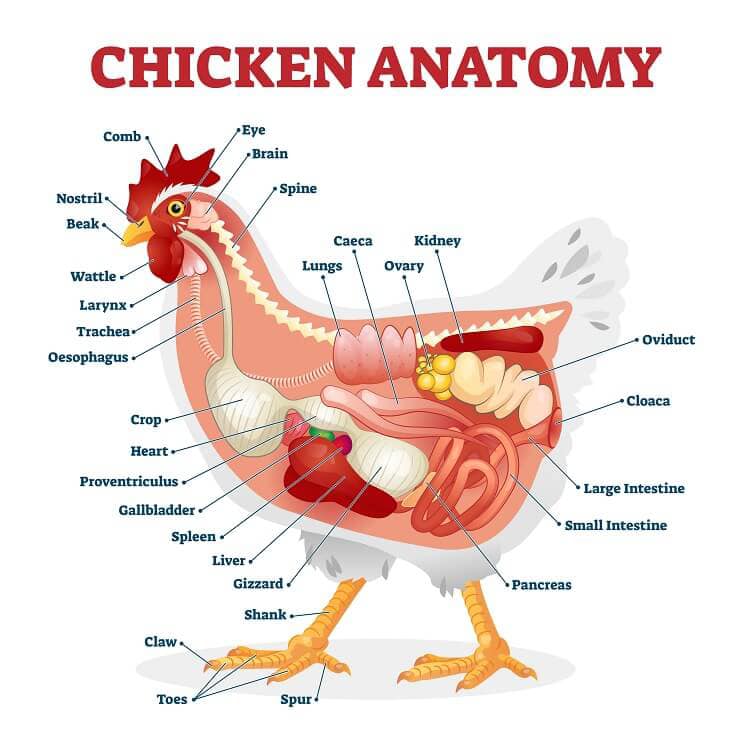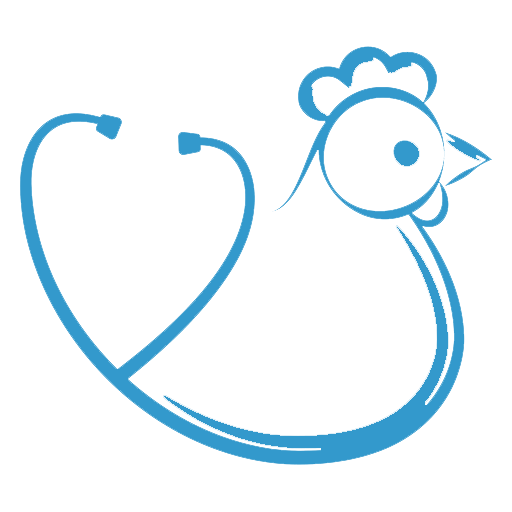Chicken Anatomy
Knowing the basics about your chicken is super important. Let’s start out with knowing the basic parts of a chicken:

Knowledge of the anatomy and physiology of an animal is essential for understanding and correcting, any problems that may arise. For example, knowledge of the digestive system assists in understanding the nutritive requirements of chickens. In addition, knowing what is ‘normal’ can also help you recognize and take action when the digestive system goes awry. Similarly, knowledge of the female reproductive system is important for understanding any problems that may arise regarding egg production, fertility, and hatchability.

Image source: Poultryhub.org (used with permission)
DIGESTIVE SYSTEM
Chickens are omnivores, meaning they eat both plants and animals. In the wild chickens often scratch in the soil to search for seeds and insects. They also eat larger animals such as lizards and young mice.
Unlike cows, chickens do not have a rumen so are not able to digest the cellulose of forage. This is important when pasturing chickens.
FEMALE REPRODUCTIVE SYSTEM
Poultry eggs are part of a unique reproductive system. The egg serves to protect and provide nutrients to the developing embryo. Since the embryo receives no additional nutrients from the hen, the egg must contain all the nutrients essential for life.
Chickens mate when the male mounts the female and they have a ‘cloacal kiss’ in which the cloaca of both chickens touch for a few seconds. This is sufficient time for the sperm to transfer from the male to the female.
MALE REPRODUCTIVE SYSTEM
Unlike mammals which have their male reproductive organs outside of the body, all the reproductive organs of a male bird are located inside the body cavity. The body temperature for birds, at 106-107F, is higher than that of mammals. This means that avian sperm have to be able to withstand higher temperatures than their mammalian counterparts.
RESPIRATORY SYSTEM
Birds don’t breathe the same way mammals do. Like mammals, birds have two symmetrical lungs that are connected to a trachea (windpipe). But here the similarity ends.
SKELETAL SYSTEM
All animals have a skeleton to allow them to stand up and protect their internal organs and tissues. The avian skeletal system looks similar to its mammalian counterparts, but there are some important differences. Many of these differences relate to the bird’s need to be light enough to fly while still maintaining the needed body support.
MUSCULAR SYSTEM
All animals have three of types muscles: smooth, cardiac, and skeletal. Smooth muscle is controlled by the autonomic nervous system (ANS) and is found in the blood vessels, gizzard, intestines, and organs. The cardiac muscle is the specialized muscle of the heart. Skeletal muscle is the type of muscle responsible for the shape of the chicken and for its voluntary movement. The poultry meat you eat is skeletal muscle.
